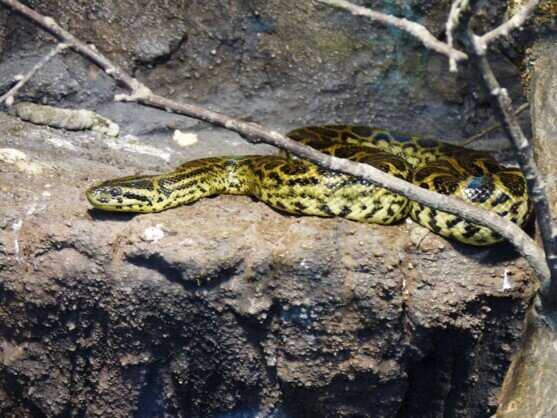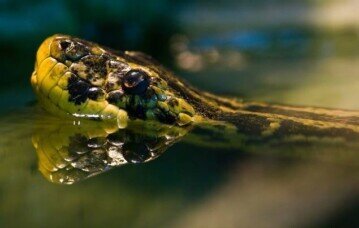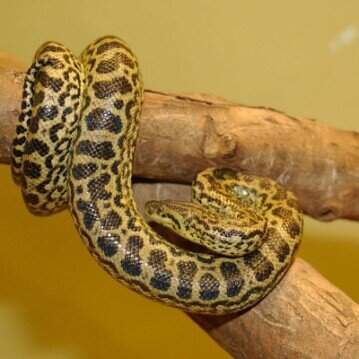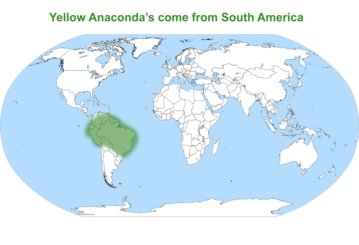Yellow Anaconda
Reptilarium Animals
Yellow Anaconda
Conservation status (Least Concern)


The yellow anaconda (Eunectes notaeus ), also known as the Paraguayan anaconda, is a boa species endemic to southern South America. It is one of the largest snakes in the world but smaller than its close relative, the green anaconda. Like all boas and pythons, it is non-venomous and kills its prey by constriction. No subspecies are currently recognised.
The Yellow anaconda is a non-venomous boa species endemic to southern South America. It is one of the largest snakes in the world but smaller than its close relative, the Green anaconda. The colour pattern consists of a yellow, golden-tan or greenish-yellow ground colour overlaid with a series of black or dark brown saddles, blotches, spots, and streaks. Females in this species are generally larger than males.


The range of the Yellow anaconda encompasses the drainage of the Paraguay River and its tributaries, from the Pantanal region in Bolivia, Paraguay, and western Brazil to northeastern Argentina, and possibly parts of Uruguay. These snakes prefer mostly aquatic habitats, including swamps, marshes, and brush-covered banks of slow-moving rivers and streams.
Yellow anacondas are carnivores. Their prey consists nearly exclusively of aquatic or semi-aquatic species, including a wide variety of mammals, birds, reptiles, amphibians, fish, and eggs. Larger specimens can prey upon larger animals, such as Brocket deer, Capybara or peccaries.
Yellow anacondas are solitary snakes that can be active both during the day and night. They spend most of their life in or around water and are sometimes known as "Water boas”. When in water anacondas usually float atop the water, with their snouts barely poking out above the surface. Although most of their time is spent in aquatic habitats, Yellow anacondas do come out onto land in order to move to other water bodies, for hunting terrestrial prey and for mating. They forage predominately in shallow water in wetland habitats using ambush predation and wide-foraging strategies. Most predation occurs from June to November when flooding has somewhat subsided and wading birds are the most common prey. These snakes are considered timid and usually try to escape from predators, however, if threatened they will defend themselves.


